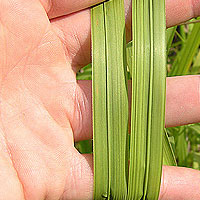MS Invasive Species
 Have aliens invaded your neighborhood? The answer is probably yes! Currently there are some 50,000 plant and animal species of foreign origin established in the United States. Only a small percentage of these species are harmful or invasive. However, that small percentage is responsible for more than $138 billion annually in losses resulting mostly from control costs and loss of marketable goods.
Have aliens invaded your neighborhood? The answer is probably yes! Currently there are some 50,000 plant and animal species of foreign origin established in the United States. Only a small percentage of these species are harmful or invasive. However, that small percentage is responsible for more than $138 billion annually in losses resulting mostly from control costs and loss of marketable goods.
In addition, invasive (non-indigenous) species are the primary risk factor for 42% of species on the US Department of Interior's endangered species list. No price tag can be placed on their loss.
Invasive species are not only a local problem but also a national and global one of huge proportions.
The February 1999 Executive Order 13122 of the President of the United States of America which established The National Invasive Species Council provides the following definitions for alien and invasive species:
- "Alien species" means, with respect to a particular ecosystem, any species, including its seeds, eggs, spores, or other biological material capable of propagating that species, that is not native to that habitat.
- "Invasive species" means an alien species whose introduction does or is likely to cause economic or environmental harm or harm to human health.
What you can do to stop invasive species:
- Be informed and tell others
- Plant native species
- Be careful to avoid transporting invasive species
- Volunteer to help with control efforts
Examples of invasive species:



